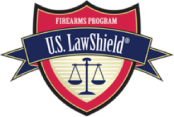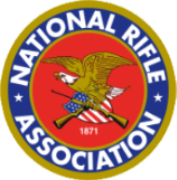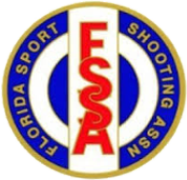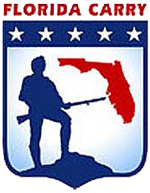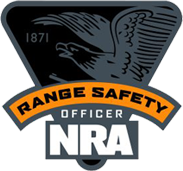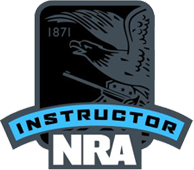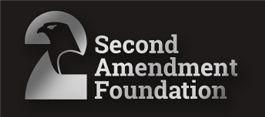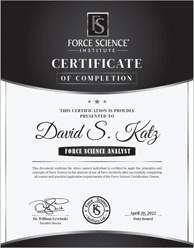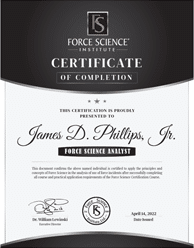Gun Law 101: CWFL Basics Part 1
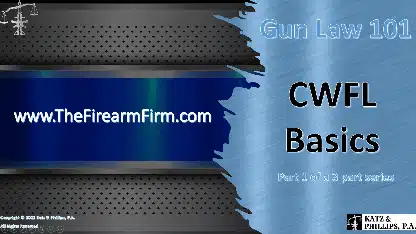
Video Transcript:
Hello everybody. This is David Katz. Welcome to the Firearm Firm’s Gun Law, 101 – 3-part series. Today we have Permitless Carry & CWFL basics, part one of the Gun Law, 101 series. Before we get started, we do have to cover some legal stuff. So first, we’ll let you know that attending this webinar does not create an attorney-client relationship between you and me or you and my law firm Katz and Phillips, P.A. – The Firearm Firm. All of the information you hear today is provided as general information and no legal advice is being given. If you have a situation, please call an attorney licensed in your jurisdiction to discuss the particulars of your matter. All of the images that you see used in this presentation today are licensed by Katz and Phillips, P.A., through ShutterStock, Filmstro, or other licensing organizations, or are used under the Copyright Act of 1976, “Fair Use” provisions.
It is important to note that our law firm is located in Florida and we are licensed only in the state of Florida. All information provided is for, or under, Florida law. If you live outside of the state of Florida, please do not rely on the information that you are hearing during this webinar. This webinar is designed for the state of Florida and contains only Florida law.
By way of introduction, as you’ve already heard, my name is David Katz. I am managing partner of Katz and Phillips, P.A., The Firearm Firm. My practice is almost entirely self-defense and gun law. My partner, James Phillips, and I have written the best-selling book on Florida gun law simply called Florida Gun Law, Armed and Educated, the fifth edition is currently with the publisher and should be released by July 1. We are also statewide attorneys for U.S. LawShield. I am the former president and current board member of the only Second Amendment professional association for lawyers, the American Council of Second Amendment Lawyers, as well as a proud life member of Florida Carry, a member of the NRA, and many other organizations working to preserve our right to bear arms. Finally, I’m lead counsel on several lawsuits against the state of Florida and the Florida Department of Law Enforcement working to preserve our constitutional rights here in Florida. Enough about me, let’s get this show on the road.
In this webinar, we will cover the following topics: Florida’s New permitless carry law. The two ways you can now conceal carry legally in Florida. What weapons are covered carrying under permitless carry or a CWFL? What is concealed carry? And what do the terms, “concealed from the ordinary site” and “on or about his or her person” mean? We will review the requirements to get a CWFL and those to carry without one and review the differences between the two. Next we will discuss where you can carry a firearm even if you do not qualify for a CWFL or to carry under permitless carry. We will discuss vehicle carry and we will discuss where your CWFL and permitless carry allow you to lawfully carry. We will finish today’s webinar with a discussion of special areas of concern for concealed carries and most importantly why you should still get a CWFL or maintain yours if you already have one. Though the differences between carrying with a CWFL and without on are few, they are important and can have an effect on your ability to carry and potentially on your freedom.
So why are we all here? Because as of July 1st 2023 in just 10 days, Florida’s New permitless carry law goes into effect. That date is important to remember as you watch this webinar live or if you are watching the recording of it on our website prior to July 1st, 2023 as you must remember the laws we are discussing do not take effect until July 1st 2023. I will say it one last time. This webinar becomes legally accurate on July 1, 2023. You cannot lawfully conceal carry a weapon or firearm without a CWFL until July 1, 2023. When does the new law take effect? July 1, 2023. So starting July 1, 2023 and not a minute before than, Floridians and those visiting florida will be able to conceal carry a firearm or certain other weapons with or without a CWFL or recognized out of state equivalent. That is right, the new law also applies to those visiting the sunshine state whether or not they have a recognized out of state license or permit to carry. I should say for those that do not know; we will be using the term CWFL throughout this webinar. What is a CWFL? CWFL stands for Concealed Weapon and Firearm License. It is the only license issued by the state of Florida that allows the concealed carry of a firearm or certain other weapons. Open carry is illegal in Florida, except under some very limited exceptions, which we will discuss later. Many people are shocked to learn that in Florida, the issuance of a license to carry a firearm is controlled by the Department of Agriculture. Florida is a shall issue state, which means that unless you’re disqualified from licensure, the Department of Agriculture must issue you a CWFL.
As we just discussed, starting July 1, you will no longer need a license to conceal carry in Florida. That is because of Florida Statute 790.01 (1), which now reads A person is authorized to carry a concealed weapon or concealed firearm, as that term is defined in 790.06(1) if: (a) they are licensed under 790.06; or (b) they are not licensed under 790.06 but otherwise satisfy the criteria for receiving and maintaining a license under 790.06. The law then lists almost all of the statute sections you must comply with to actually get a CWFL. We will discuss the few sections that are missing later on.
As you can tell by the name, a CWFL covers much more than a handgun. It also allows for the concealed carry of various other weapons. The weapons covered by a CWFL and now by Florida’s permitless carry law are the exact same. Whether you have a CWFL or at least can qualify to get one and carry under the permitless carry law, the weapons you are authorized to conceal carry are a handgun, a knife, an electric weapon, such as a stun gun, or taser, a tear gas gun or other chemical weapon, and a billie.
We will discuss each of these in more detail. There’s really not much to say about a handgun except that the new law now contains a definition of handgun that matches the definition previously only found in the Florida constitution. A handgun is defined as a firearm, capable of being carried and used by one hand, such as a pistol or revolver.
Before we discuss other weapons, which can be carried concealed under Florida law, you must remember that the Florida legislature has preempted local governments from making laws or ordinances involving firearms. However, they have not done the same with the other weapons we are discussing. It is important to remember that local laws could change the legality of what you are hearing about non firearm weapons. The information presented is based only on state law.
Unlike handguns, there is a lot to talk about when it comes to knives, aside from the Bowie knife pictured, there are many types of knives that are allowed. These include a butterfly knife, belt buckle, or otherwise disguised knife, and even ceramic knives that will not be detected by metal detectors. Further, there is an exception for what is known as the common pocketknife. A common pocketknife may be carried concealed with the blade in the closed position. There is lots of case law on what is and is not a common pocketknife, entirely too much for our purposes, but suffice it to say that a folding knife with a blade, not more than four inches without a notch grip, hilt guard, and locking blade mechanism is typically considered a common pocketknife. There is one knife which Florida law specifically makes it illegal, not only to possess, but to manufacture or sell within this state, that knife is called the ballistic knife. Ballistic knives shoot the blade from the knife as a projectile.
Under Florida statute § 790.01, electric weapon or device means any device, which through the application or use of electrical current is designed, redesigned, used, or intended to be used for offensive or defensive purposes, the destruction of life, or the infliction of injury. Section 15 defines a dart firing stun gun as any device having one or more darts that are capable of delivering an electrical current. Use by anyone under 16 years of age is only allowed with adult supervision. There is also an important case to know regarding electric weapons. In Florida Carry Inc. vs Thrasher, the First District Court of Appeals held that a registered student, employee, or faculty member of a college or university who possesses a valid CWFL may carry a stun gun, or non-lethal electric weapon or device designed solely for defensive purposes on campus if the weapon does not fire a dart or projectile. Though likely to apply to those without a CWFL who carry under the new permitless carry law, currently, the only case law specifically states that this applies to those with a CWFL, so beware if you are a registered student, employee, or faculty member of a college or university carrying on campus without a CWFL, until a court tells us that the new law expands this right to those carrying under permitless carry, no one can tell you for sure if you are carrying legally or illegally on campus.
Florida law defines both tear gas, gun, and chemical weapon or device to mean any weapon of such nature. So, our legislature has defined tear gas gun and chemical weapon as a device such as a tear gas gun or chemical weapon or device. Not a great definition, but I guess what they’re saying is that you’ll
know it when you see it. This leads to a large variety of chemical self-defense weapons being legal. Most people will recognize mace or pepper spray in the traditional spray can. If you carry under the new law either with or without a CWFL you can own any size can of chemical weapon that you can conceal.
However, remember it must be concealed.
Florida law excludes from the definition of tear gas gun or chemical weapon or device, any self-defense chemical spray carried solely for purposes of lawful self-defense that is compact in size and designed to be carried on or about the person, and contains not more than two ounces of chemicals. This is typically
seen as a keychain-size spray can. Therefore, even those who do not qualify to carry under the new Florida law, with few exceptions, can carry a canister of pepper spray with two ounces or less of active chemical.
Florida law does not define what a billie is. The courts, therefore, look to the plain meaning of the word. A billie is defined as a heavy wooden stick with a handle grip designed to be used to strike an individual. The courts have held that a small souvenir bat does not qualify as a billie under the statute because
there was no evidence presented that when used in its ordinary and usual manner, it was normally dangerous or deadly.
No other weapons are covered by a CWFL or permitless carry, therefore other weapons such as brass knuckles cannot lawfully be carried concealed.
So what is a concealed weapon or concealed firearm. Well we have already learned the weapon or firearm part of the definition. But a concealed weapon or concealed firearm is a handgun, knife, electric weapon, tear gas gun, or billie which is carried on or about a person in such a manner as to conceal the firearm from the ordinary dight of another person.
The term “concealed from the ordinary sight of another person” means the casual and ordinary observation of another in the normal associations of life. A firearm or weapon need not be completely hidden for it to be concealed, however, a firearm or weapon is not concealed if although not fully exposed its status as a firearm or weapon is detectable by ordinary observation. Based on the cases, it’s
important to note that the intent of the person carrying a weapon or firearm to conceal or not conceal the weapon is not relevant to whether or not the firearm or weapon was, in fact, concealed. The courts have stated that in determining whether or not a weapon or firearm is concealed from the ordinary site, there are certain variables that should be considered, and others that are irrelevant. Relevant factors
include to what extent the weapon was covered, the location of the weapon, and the nature and type of weapon, among other things. Irrelevant factors include the time of day or night, or whether a car window was opened or closed. The courts specifically have indicated that the fact a firearm, which is
black cannot be seen at night because it is dark, does not make it any more concealed than it would have been during the daylight hours when it could have been easily spotted, nor does dark tint on a car’s windows make a firearm concealed because it could not be viewed until the window or door was opened.
According to Florida standard jury instructions, “on or about a person” means physically on the person or readily accessible to him or her. Generally, you can think of this as meaning as easily accessible as if carried on the person.
The final point worth discussing in this topic is that the brief and open display of a firearm, whether done accidentally or intentionally to another person, is not illegal. For example, if a person bumps into their friend in a parking lot and tells them that they got a new firearm, they can show the firearm to the friend
for a brief period of time, regardless of who else is around and sees it. Additionally, a person who conceal carries a firearm that is momentarily displayed because of a gust of wind or while reaching for an item on a shelf, commits no crime due to the brief and open display of the firearm. Of course, if displayed in anger, it could be a crime.
Now we are going to talk about qualifying for a CWFL or qualifying to conceal carry without one under permitless carry. I said it earlier, so it should surprise no one to learn that The requirements for a CWFL are in large part the same as the requirements to qualify to carry without one!
Florida Statute § 790.06 (2) (a)-(f), (i)-(n), (3) and 10
But not 790.06(2)(g),(h) or (4) – (9)
The requirements are that you must be:
(a) resident and citizen of the United States or a permanent resident alien of the United States; who is 21 years of age or older; you cannot suffer from a physical infirmity which prevents the safe handling of a weapon or firearm; you cannot be a convicted felon or have been convicted of a drug crime
within 3 years immediately proceeding the date on which you either submit your application for a CWFL or begin conceal carrying without one. You cannot have been committed for the abuse of a controlled substance or chronically and habitually use alcoholic beverages or other substances to the extent that
you are impaired. So far all of the requirements discussed apply to you if you are applying for a CWFL or if you just want to carry legally without one. The next two requirements are the first two that ONLY apply to you if you are applying for a CWFL.
I’ll be honest, I am not sure why they excluded letter g from those who want to carry permitlessly. I would hope that those who want to carry permitlessly also and only desire a legal means to carry a concealed weapon or firearm for lawful self-defense. Seems odd that they did not include that, but
according to the law, that and letter (h) only apply to those who are applying for a CWFL. Letter H is a big one. To get a CWFL, you must demonstrate competence with a firearm by taking and successfully completing and one of a large number of choices of firearm training and safety courses. So to get a CWFL
you must get training and show proficiency with a firearm, to carry permitlessly you do not need any training or any level of proficiency. While we are on the subject of CWFL only requirements, the only mention I am going to make of 790.06 subsections 4 – 9
is to tell you that they deal with the licensing and application procedures, which is why they do not apply to those wishing to carry without a CWFL.
Now we are heading back to the requirements that apply to both those wishing to carry with or without a CWFL
You cannot get a CWFL or carry without one if you have been adjudicated an incapacitated person, committed to a mental health institution, had adjudication of guilt withheld or received a suspended sentence on any felony or misdemeanor crime of domestic violence unless 3 years have elapsed since
probation, or any other conditions set by the court have been fulfilled or the record has been sealed or expunged. You also cannot get a CWFL or qualify to permitlessly carry if there is an injunction currently in force that restrains you from committing acts of domestic or repeat violence. Now here is a big one
and I know that many are not going to want to hear this, but the final qualification to get a CWFL that will also prohibit you from carrying legally without a license is that you cannot be prohibited from purchasing or possessing a firearm by any other provision of Florida or federal law. Guess who is
prohibited from possessing a firearm by federal law. Users of medical marijuana for one. Therefore, if you are prohibited from possessing a firearm under federal law because you use medical marijuana or for any other reason, you do not qualify to carry under Florida’s permitless carry law.
OK, those are all of the qualifications to receive a CWFL. If you are going to apply for a CWFL and qualify as listed you are all set. However, to carry under the permitless carry law, there are additional disqualifiers you must avoid. These are the same as what a person who has a CWFL must do to maintain their CWFL.
If you are found guilty of, had adjudication of guilt withheld for, or had imposition of sentence suspended for one or more crimes of violence constituting a misdemeanor, you cannot carry permitlessly and if you have a CWFL or have applied for one, it will be revoked or your application will be denied unless 3 years have elapsed since probation, or any other conditions set by the court have been fulfilled or the record has been sealed or expunged.
Further, if you are arrested or formally charged with a crime that would disqualify you from having a CWFL, or an injunction that restrains you from committing acts of domestic violence or acts of repeat violence, you cannot carry under permitless carry, and if you have already applied for a CWFL or already have one, the processing of your application will be suspended or your license revoked until the case is fully and finally resolved or the injunction is no longer active and in force.
Finally under subdivision (10) you are ineligible to permitlessly conceal carry and your CWFL shall be suspended or revoked if you are found to be ineligible under the previously mentioned criteria, or if you develop a physical infirmity which prevents you from safely handling a weapon or firearm, are convicted of a felony, found guilty of a crime relating to controlled substances, committed as a substance abuser or deemed a habitual offender, convicted of a second DUI within 3 years after a first conviction, adjudicated incapacitated or committed to a mental institution.
Right now, we are going to take a 2 minute 15-second break to hear from our sponsor, U.S. LawShield, who generously makes it so we can provide these webinars to you for free. We will be right back.
The next topic we are going to discuss is lawfully carrying a firearm without a CWFL and even if you do not qualify under the new permitless carry law. An example would be a person over 18, but not yet 21. To qualify in any of the following situations, you must be able to lawfully possess a firearm, even though you cannot lawfully get a CWFL or qualify to carry under permitless carry, you can still lawfully conceal or open carry a firearm in your own home.
Make no mistake, this means what it says. There is a lot of misinformation regarding this law. In order to carry either openly or concealed, it must be the home you live in. This does not allow a homeowner to let visiting friends openly carry on their property. It also does not mean that you can open carry on any property you own. If you do not live on the property and it does not fit into another one of the exceptions, you cannot open carry or conceal carry just because it is your property.
You are also allowed to open or conceal carry a firearm in your place of business or employment. This was first recognized by the courts in Peoples vs State and clarified to include the surrounding property and State vs Anton. However, be careful as there’s currently no case that informs us about common areas where a business is located, such as a strip mall with a common parking lot. Likely, based on the cases regarding condominiums and apartments, it is not permissible to carry in those common areas without a CWFL. Also, it is important to remember that although you can legally open or conceal carry at your place of employment, your employer does not have to let you do so. A business owner can prohibit the open or concealed carry of firearms on their property.
You can also open or conceal carry while you are camping, fishing, or lawfully hunting. This applies even if you decide to go camping at a state or national park, the exception is the Savannah Preserve State Park, where firearms are not allowed. Remember if you are camping at a national park, you cannot carry your firearm into any federal buildings within the park. You are also allowed to conceal or open carry while on your way to, or returning from a camping, fishing or lawful hunting expedition. This means you may open or conceal carry from your home directly to your camping, fishing, or lawful hunting destination. However, you cannot make any stops for gas supplies or other reasons on your way to, or home, from the camping, fishing, or lawful hunting site. Although the law allows you to open carry while traveling to and from these activities, it is likely that you will get a lot of unwanted attention by law enforcement. If you are seen open carrying on your way to, or from, your destination. Also, remember that you must be camping, fishing or lawfully hunting. Therefore, carrying a fishing rod, with no bait or tackle 20 miles from the nearest fishing spot, will not likely qualify you to open carry and the courts will look at the totality of the circumstances in determining whether or not you were breaking the law.
Additionally, the open or concealed carry of firearms is also allowed when traveling to or from places where firearms are typically used. For example, while going to or from shooting, if you are a regularly enrolled member of a target or trap shooting club, or if you are firing weapons for testing or target practice under safe conditions, you may carry a firearm.
A vehicle is another place that you can possess a firearm without qualifying to lawfully conceal carry either with a CWFL or under permitless carry.
One popular belief is that if you do qualify to lawfully conceal carry, you must follow the three-step rule. Let’s watch this video with my partner, James Phillips to learn more.
Typically, a three-step rule is just that, the ability to fire a firearm is three steps away. An example of the three-step rule would be step one, your gun is unloaded. Step two, your gun is in a closed case or in a holster with a snapping or buckling retention strap. Step three, your gun is in the case or holster, and is then put into the glove box or center console. To be clear, Florida does not now, nor has it ever had a three-step rule. The law regarding carrying a firearm in your car without a CWFL is found in Florida Statute § 790.25(5), entitled possession in our private conveyance, which in relevant part reads:
It is lawful for a person 18 years of age or older to possess a concealed firearm or other weapon for self-defense or other lawful purpose within the interior of a private conveyance without a license. If the firearm or other weapon is securely encased or is otherwise not readily accessible for immediate use.
To be securely encased, all that is required is that the firearm be in a closed container, such as the glove box or center console of the car, a firearm cannot be placed loosely under a seat or between the seat and center console.
As you have just learned, there is no three-step rule in Florida. In order to carry a firearm in a vehicle without a CWFL if you do not qualify to carry under the new permitless carry law, the following must occur:
1) You must be at least 18 years of age;
2) The firearm must be either securely encased; or
3) Not readily accessible for immediate use, as James just explained in the video.
Next, we’re going to talk about lawfully carrying either with a CWFL or Under permitless carry, then we will end today’s webinar by discussing some places only a CWFL holder can lawfully carry and other advantages of getting a CWFL.
Let’s talk first about places many of you are likely to encounter on a regular basis:
The property of any school. This includes any K through 12 public school, private school, or religious school. The general rule is that you cannot bring a firearm onto school property, but there are some important exceptions, Florida Statute § 790.06 contains a number of subsections that explicitly prohibit the carrying and possession of firearms on school grounds. Firearms are not allowed at any school or college athletic event, not related to firearms. Florida Statute § 790.115 broadens this prohibition by applying it to all school sponsored events and school property. A person may not possess a firearm or other weapon at a school sponsored event, on the property of any school, school bus, or school bus stop subject to the exceptions we will discuss. This includes the grounds of any elementary or secondary school facility or administration building and career centers. Florida does not allow for the concealed or open carry of firearms on university or college campuses. However, remember that if an individual is a registered student, employee, or a faculty member of the college or university, they may carry a stun gun or non-lethal electric weapon or device designed solely for defensive purposes if it does not fire a dart or projectile. Further, as previously mentioned a person may carry under one of the few exceptions laid out in Florida Statute § 790.115.
A firearm can be carried in a case to a firearms program, class, or function that has been approved in advanced by the principal or chief administrative officer of the school, as a program or class to which a firearm can be carried, or carried in a case to a career center having a firearms training range.
Now let’s talk about school parking lots. Remember that we already said that under Florida law concealed firearms can be carried without a license in a vehicle, as long as the person is 18 or older and the firearm is securely encased or otherwise not readily accessible for immediate use. This extends to the carrying of a firearm in a person’s vehicle, on the grounds of a school, or at a school activity. However, school districts are free to adopt written and published policies that waive this exception for purposes of student and campus parking privileges. This means that while firearms in vehicles on school parking lots are legal under state law, an individual school may have a policy that makes it illegal to have one on the lot. Remember, even if a school district does not have a policy prohibiting firearms on the property, they still may not be taken outside of the vehicle or into a school building.
No discussion of schools and firearms would be complete without also talking about the federal Gun-Free Schools Zones Act. The federal Gun-Free Schools Zones Act is found in the United States Code § 18, U.S.C. 922. Under this law. It is a federal crime for an individual to possess a firearm on the grounds of, or within a thousand feet of a public, parochial, or private school. This takes the prohibition on carrying a firearm to a school one step further than Florida state law, even making the mere possession of a firearm by an occupant of a vehicle driving past a school or dropping their child off a federal crime. However, seven exceptions are provided, the first four of which we will discuss because they are likely to apply to many of us.
Exception One – if the possession is on private property, which is not part of the school grounds. This means that a person living within a thousand feet of a school can keep a firearm in their home.
Exception Two – if the individual possessing the firearm is licensed to do so by the state in which the school zone is located. This means that a CWFL holder may legally carry a concealed firearm into a gun-free school zone. However, there is one important note about the statute. A person can only lawfully carry in a school zone located in the state that issued the firearm license. Therefore, if a person has a Florida CWFL, they can only carry through Florida school zones. If that Florida CWFL holder is traveling through another state, the exception under federal law does not apply to them, and they will be violating the law if they travel through a school zone in the state they’re visiting. It also means that a Florida resident who holds a non-resident, non-Florida concealed carry license or permit does not benefit from this exception and will be in violation of the law if they take a firearm into a school zone.
Exception Three – if the firearm is not loaded and is in a locked container or a locked firearm rack. This means that if a firearm is unloaded and carried in a locked case, a glove box or trunk that is locked, for example.
Exception Four – There is no violation of federal law if the firearm is carried by an individual for use in a program approved by a school in the school. This exception covers school sponsored shooting activities, such as an ROTC program.
So, let’s try and make sense of the law in light of the separate federal and Florida state laws. Fortunately, for our purposes, Florida state law and federal law are similar in their allowances for firearms in school parking lots. The most important question for most of us is, “what do I do when picking my child up in the car line from school?” Remember that Florida state law allows a firearm to be carried in a school parking lot if it is concealed in either a secured, locked container, or otherwise not readily accessible for immediate use, and exception three to the Federal Gun-Free Schools Zone Act allows an unloaded firearm to be carried in a lock container or locked firearm rack. If you have a CWFL your firearm must be concealed and encased and must remain in the vehicle on school grounds. If you do not have a CWFL, then in addition to the requirements for a CWFL holder, your firearm must also be unloaded and in a locked container. And remember that if you are parking in the school parking lot, you need to know if the school district has a policy forbidding firearms in cars for campus parking purposes.
Now let’s look at the list of other places where you are prohibited from carrying
Any place of nuisance as defined in s. 823.05; Any police, sheriff, or highway patrol station; Any detention facility, prison, or jail; Any courthouse; Any courtroom, except that a judge may carrying a concealed weapon or determining who will carry a concealed weapon in his or her courtroom; Any polling place; Any meeting of the governing body of a county, public school district, municipality, or special district; Any meeting of the Legislature or a committee thereof; Any school, college, or professional athletic event not related to firearms; Any elementary or secondary school facility or administration building; Any career center; Any portion of an establishment licensed to dispense alcoholic beverages for consumption on the premises, which portion of the establishment is primarily devoted to such purpose Any college or university facility unless the licensee is a registered student, employee, or faculty member of such college or university and the weapon is a stun gun or nonlethal electric weapon or device designed solely for defensive purposes and the weapon does not fire a dart or projectile; The inside of the passenger terminal and sterile area of any airport, provided that no person shall be prohibited from carrying any legal firearm into the terminal, which firearm is encased for shipment for purposes of checking such firearm as baggage to be lawfully transported on any aircraft; or Any place where the carrying of firearms is prohibited by federal law.
We can now talk about some of the common places you may encounter which are prohibited by Federal Law.
The U.S. Post Office – which includes the entire property and the parking lot.
Federal Facilities – a building or part thereof owned or leased by the Federal Government, where Federal employees are regularly present for the purpose of performing their official duties. These facilities must be posted as off limits to firearms conspicuously at each public entrance.
- Veteran’s Affairs Hospitals and other VA facilities
- School Zone
- The term “school zone” means in, or on the grounds of, a public, parochial or private school; or within a distance of 1,000 feet from the grounds of an elementary or secondary public, parochial or private school.
So, where can you lawfully carry? Let’s review. Even if you do not have a CWFL or qualify to carry under permitless carry, as long as you are not otherwise prohibited by law from possessing a firearm, you can carry in your own home, place of business, or employment. In a motor vehicle securely encased. You can also carry without either concealed or openly while engaged in camping, fishing or lawful hunting, firearms training, testing, or target practice, and while traveling directly to or from those locations and events.
If you have a CWFL or qualify to carry permitlessly, you can carry in a motor vehicle concealed. Your firearm may be readily accessible and does not need to be securely encased, but it does need to be concealed. You can also carry in any public place, not prohibited by law, which includes pretty much everywhere with the exceptions we’ve just covered and some tricky places, which we will cover shortly. You can lawfully carry in hospitals unless they provide mental health services. Then the entire hospital is off limits. You can also carry on state and local government property unless a meeting is occurring. You can carry in a grocery store, convenience store, and the liquor store. You can carry virtually anywhere we have not discussed as prohibited.
Now let’s talk about No Gun Signs, But first, let me make sure you understand that at our law firm, we do not take chances with your freedom. The advice we give when an area is unknown will always be the advice that will keep you from getting in trouble. Many legal scholars, including attorneys who practice in firearm law will give different advice when it comes to gun signs. Florida law does not address a “No Guns” sign. No one can give you a definitive answer regarding whether these signs have any legal effect. There is also no case law, where a judge has decided whether a No Gun sign has any effect. We therefore tell you to treat them as if they do have legal effect. We do not want you to be the test case. If a property owner does not want people on their property with firearms, they have a right to ban them. Those who have knowledge that they are not welcome while carrying a firearm who do so anyway are trespassing. Armed trespassing is a felony. Personally, we do not believe these signs have legal effect, however, you must decide if you want to take the risk. We recommend you do what we do, and if you see a sign banning firearms, don’t take the risk, take your business elsewhere, or risk being the test case. Why would you want to give your hard earned money to a business that did not respect your second amendment rights anyway.
Thank you for joining us today for the first part of our Gun Law, 101 webinar series. We will be releasing parts two and three shortly. We hope you will join us for those. Today’s webinar was sponsored by U.S. LawShield. Visit www.uslawshield.com. Also, after the webinar, please stay tuned for a word from U.S. LawShield. Further, we will be repeating the introductory videos that we played prior to the webinar immediately after the conclusion of this webinar. For those of you who missed them, please stay tuned. They contain a lot of important information and useful information about our law firm, our sponsors, and if you’re a member of U.S. LawShield, about your membership. This webinar has been produced and presented by the law offices of Katz & Phillips, P.A.,- The Firearm Firm. If you have any questions, please feel free to email us at questions@thefirearmfirm.com and we will respond to you within two business days. Thank you for being here. We hope you learned a lot.
More results...
Get in touch

"*" indicates required fields
Copyright © 2022-2025 The Firearm Firm All rights reserved.
